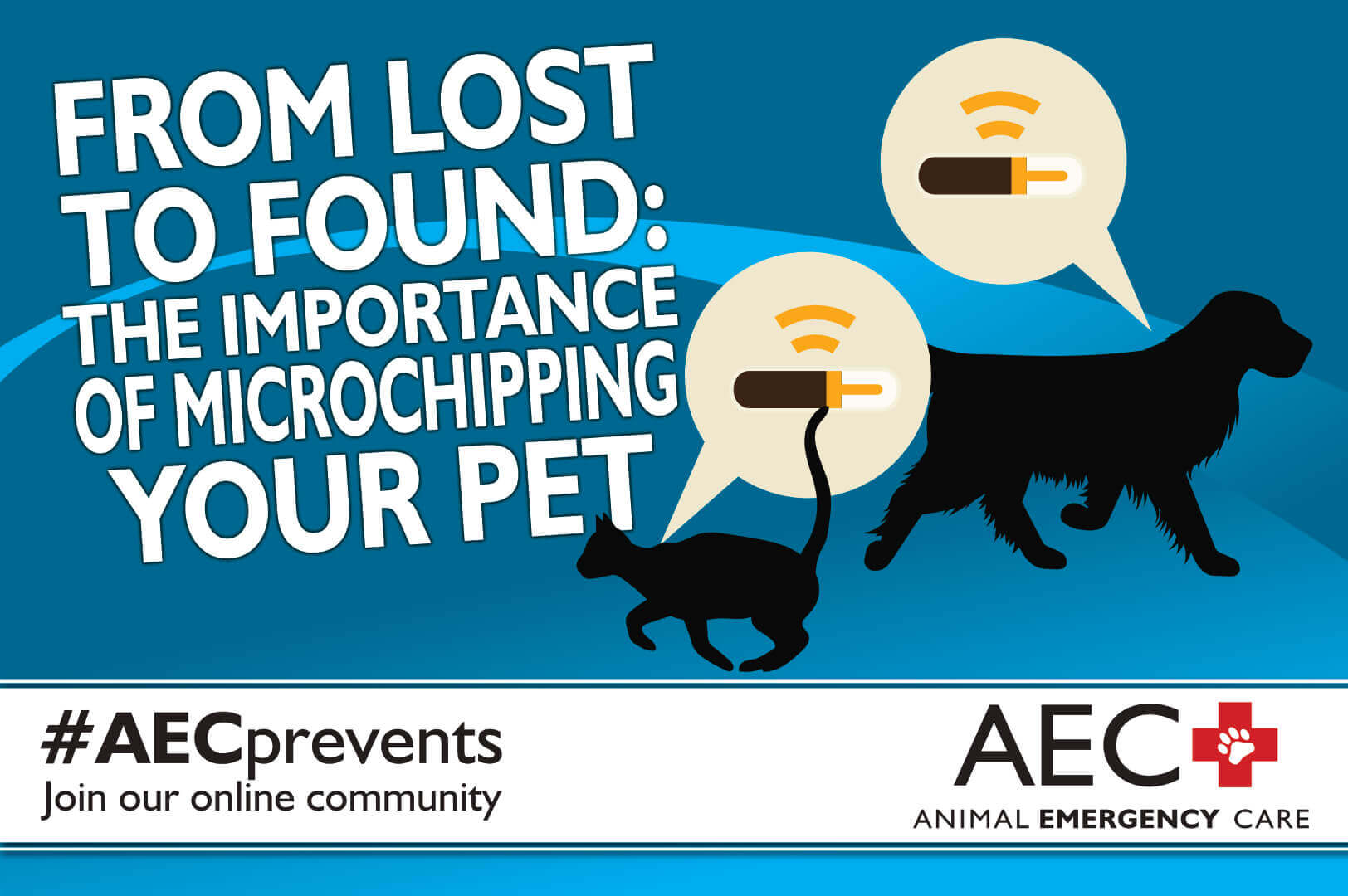Losing a beloved pet may be one of a pet owner’s greatest fears. Our pets are family, and it can be devastating when they become sick or get into trouble. You likely have seen “Lost Dog”or “Lost Cat” signs during your daily walks with your four-legged companion. In fact, the American Humane Association estimates that approximately one out of three pets will go missing in their lifetime and 80% will never be reunited with their families. Lack of identification is the main reason most wayward pets will not be returned home. Our Animal Emergency Care team wants to ensure that your pets do not become a statistic. We answer common microchipping questions and discuss how to decrease the chances of your pet becoming lost.
What is a pet microchip?
Many mischievous pets can accidentally sneak outside or decide to leave the yard to chase the pesky neighborhood squirrel and become lost. All pets should have identification whether or not they spend most or all their time indoors. A microchip is a small electronic biocompatible transponder similar to a GPS and is the safest, most effective, and permanent means of identifying your pet. This high radio-frequency identification (RFID) chip stores your pet’s unique number and letter combination similar to a human’s social security number. Your pet’s microchip does not store private information or specifics of your pet’s medical history.
How is a microchip implanted in my pet?
Many pet owners are concerned about the microchipping process or the possibility of pain or complications for their pet. Your pet’s microchip can be inserted at any age and during any routine veterinary visit although some pet owners prefer that the microchip be implanted during their pet’s spay or neuter procedure. Your veterinarian will insert the microchip under your pet’s skin between their shoulder blades with a hypodermic needle that is slightly larger than a vaccination needle. The entire process takes less than one minute and causes minimal to no observable pain. Your veterinarian will immediately scan your pet to ensure the chip is active and will record the identification number in your pet’s medical record.
What maintenance is required for my pet’s microchip?
Replacement is not usually necessary and malfunction is rare because microchips do not contain any moving parts or batteries. Ask your veterinarian to check your pet’s microchip during their yearly exam or schedule an appointment on national Check the Chip day to ensure the chip is functioning properly. Your pet’s microchip will come with a chip registration form and company website. Ensure that you register your pet’s chip and keep your contact information current with the microchip registration company. A 2009 Journal of the American Veterinary Association studyfound that 42% of microchips were not registered by pet owners.
What do I do if my pet is lost?
Losing a pet is a terrifying experience, and pet owners often do not know where to start looking for their wayward pet. Good Samaritans who find pets often take them to an animal shelter or veterinary hospital. Most hospitals and shelters use a universal microchip scanner that will detect your pet’s identification number that is stored in a database. Authorized veterinary hospitals and shelters are permitted to retrieve the pet’s owner information. The microchip can then be searched on the American Animal Hospital Association’s universal website https://petmicrochiplookup.org, which is like a Google database for microchips. This generator informs the finder who to contact to verify owner contact information. Other steps to help recover your lost pet include:
- Contacting your pet’s microchip registry and ensuring your pet is flagged as lost
- Contacting local animal shelters, rescue organizations, and veterinary hospitals and providing them a photo and description of your lost pet
- Walking or driving through your neighborhood and alerting your neighbors that your pet is missing
- Placing visible signs in the area with a clear photo of your pet and your contact information
- Listing your pet as missing on local and national pet-finder websites
- Listing your pet on The Lost Pets of Whatcom County and Bellingham Lost and Found Pets Facebook pages if your are local to our area
Pets who run away are often injured before they are found. This can require emergency veterinary care so consider purchasing pet insurance like Trupanion to ensure funds are available for such care.
Lost pet preventions tips
Preventing a mischievous pet from sneaking outside is not always possible. However, pet owners can take steps to decrease the chances of their pets going missing and to increase their chances of being quickly returned home. Ensure you do the following:
- Always have a secondary form of identification such as an embroidered collar on your pet.
- Consider placing a GPS collar on your pet for extra safety.
- Spay or neuter your pet to decrease their desire to roam.
- Always keep your pet on a leash in public.
- Properly socialize your pet to ensure new people, places, or sounds do not scare them and cause them to run.
- Teach your pet to sit and stay on command.
- Secure your yard and home because many pets accidentally escape from their yards through an open fence or broken gate.
- Stay alert when you walk or go anywhere in public with your pet.
- Don’t leave pets outside and unsupervised at night or when you are sleeping.
Our Animal Emergency Care team hopes you never have to experience the worry of a lost pet. Call our office if you need to report a lost pet in our area and schedule an appointment with your family veterinarian to have your pet microchipped. #AECprevents


